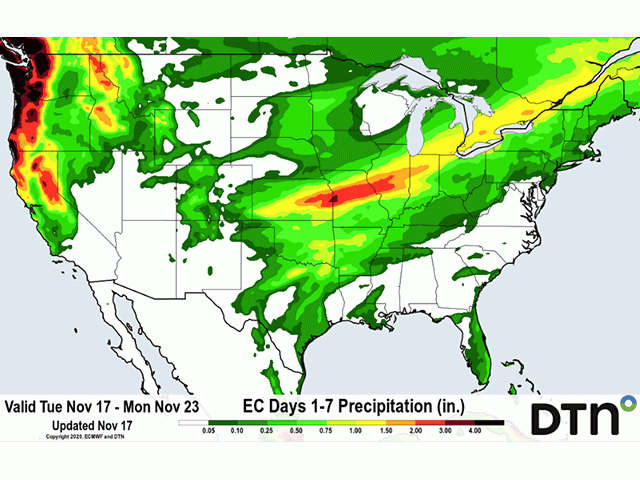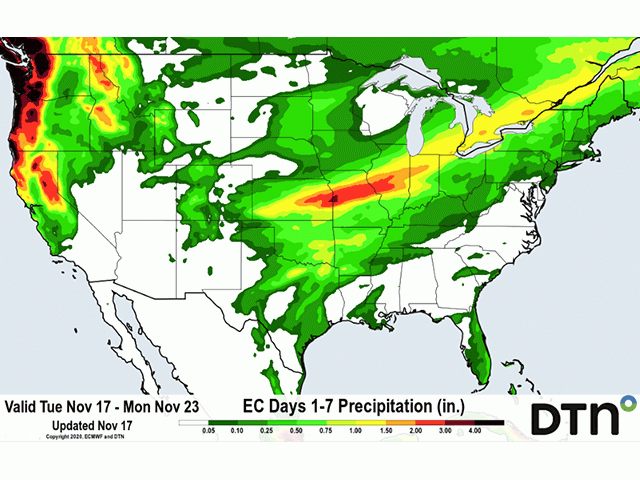Ag Weather Forum
Another US Weekend Storm
Fall harvest is close to completion, with corn harvest at 95% complete and soybean harvest 96% complete. Slower progress is noted in the Great Lakes, with Wisconsin, Michigan and Ohio all below 90% complete. In soybean harvest, the northern portions of the Delta -- Missouri, Kentucky, and Tennessee -- all show progress at 90% or less complete.
Some delays from a rainy weekend weather system will persist across these areas until they dry out, but increasing temperatures and winds should help quicken the pace. The USDA will be dropping corn and soybean harvest numbers from their weekly Crop Progress Report next week, but numbers are likely to come near completion.
P[L1] D[0x0] M[300x250] OOP[F] ADUNIT[] T[]
The attention remains on winter wheat, as the crop continues to grow roots prior to the winter. Scattered showers fell across the eastern Plains and Midwest last week, which were beneficial for the establishing crop. Temperatures in these areas largely remained above freezing as well.
That was not the case in the western Plains. Temperatures routinely fell below freezing in western Kansas south through the Texas Panhandle and points westward last week, and many of these areas were dry as drought has continued to expand.
Dry and warm weather this week, along with increasing winds, will likely further deplete soil moisture. This could cause winter wheat to go into dormancy as the crop struggles to extract moisture.
This week does offer some moisture benefit for wheat areas. A storm system this weekend is expected to provide widespread moderate precipitation from the Central and Southern Plains through the Midwest and Delta. Winter wheat will benefit greatly in all areas and the storm is likely to stay warm, with temperatures behind the system staying near normal. This may make for a few frosty mornings, but a significant freeze is not expected.
In the equatorial Pacific Ocean, sea surface temperatures continue to be below normal, indicative of a moderate La Nina. Models forecast the La Nina to remain roughly where it is now through December and gradually coming back closer to neutral through the spring. This pattern favors a cooler and wetter northern tier of the U.S. and warmer and drier southern tier. This could mean an expansion of the drought through the Plains through the winter and spring months. It will be critical to receive periodic rainfall events across the Plains, as the overall agriculture picture looks concerning heading into next year.
John Baranick can be reached at john.baranick@dtn.com
(c) Copyright 2020 DTN, LLC. All rights reserved.






Comments
To comment, please Log In or Join our Community .